Michelle Yeoh to Receive the 2026 Honorary Golden Bear at the Berlinale
Berlinale 2026 will award the Honorary Golden Bear to Michelle Yeoh, celebrating her four-decade contribution to global cinema.
Listeners:
Top listeners:
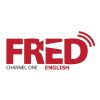 play_arrow
play_arrow
ENGLISH Channel 01 If English is your language, or a language you understand, THIS IS YOUR CHANNEL !
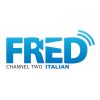 play_arrow
play_arrow
ITALIAN Channel 02 Se l’italiano è la tua lingua, o una lingua che conosci, QUESTO È IL TUO CANALE!
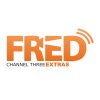 play_arrow
play_arrow
EXTRA Channel 03 FRED Film Radio channel used to broadcast press conferences, seminars, workshops, master classes, etc.
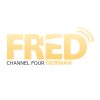 play_arrow
play_arrow
GERMAN Channel 04 Wenn Ihre Sprache Deutsch ist, oder Sie diese Sprache verstehen, dann ist das IHR KANAL !
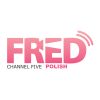 play_arrow
play_arrow
POLISH Channel 05
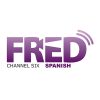 play_arrow
play_arrow
SPANISH Channel 06 Si tu idioma es el español, o es un idioma que conoces, ¡ESTE ES TU CANAL!
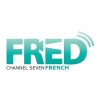 play_arrow
play_arrow
FRENCH Channel 07 Si votre langue maternelle est le français, ou si vous le comprenez, VOICI VOTRE CHAINE !
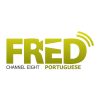 play_arrow
play_arrow
PORTUGUESE Channel 08
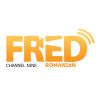 play_arrow
play_arrow
ROMANIAN Channel 09 Dacă vorbiţi sau înţelegeţi limba română, ACESTA ESTE CANALUL DUMNEAVOASTRĂ!
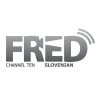 play_arrow
play_arrow
SLOVENIAN Channel 10
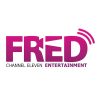 play_arrow
play_arrow
ENTERTAINMENT Channel 11 FRED Film Radio Channel used to broadcast music and live shows from Film Festivals.
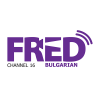 play_arrow
play_arrow
BULGARIAN Channel 16 Ако българският е вашият роден език, или го разбирате, ТОВА Е ВАШИЯТ КАНАЛ !
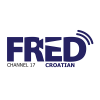 play_arrow
play_arrow
CROATIAN Channel 17 Ako je hrvatski tvoj jezik, ili ga jednostavno razumiješ, OVO JE TVOJ KANAL!
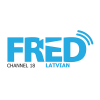 play_arrow
play_arrow
LATVIAN Channel 18
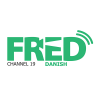 play_arrow
play_arrow
DANISH Channel 19
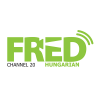 play_arrow
play_arrow
HUNGARIAN Channel 20
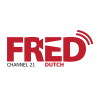 play_arrow
play_arrow
DUTCH Channel 21
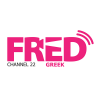 play_arrow
play_arrow
GREEK Channel 22
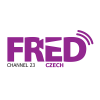 play_arrow
play_arrow
CZECH Channel 23
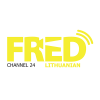 play_arrow
play_arrow
LITHUANIAN Channel 24
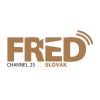 play_arrow
play_arrow
SLOVAK Channel 25
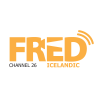 play_arrow
play_arrow
ICELANDIC Channel 26 Ef þú talar, eða skilur íslensku, er ÞETTA RÁSIN ÞÍN !
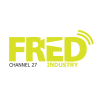 play_arrow
play_arrow
INDUSTRY Channel 27 FRED Film Radio channel completely dedicated to industry professionals.
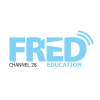 play_arrow
play_arrow
EDUCATION Channel 28 FRED Film Radio channel completely dedicated to film literacy.
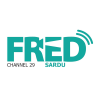 play_arrow
play_arrow
SARDU Channel 29 Si su sardu est sa limba tua, custu est su canale chi ti deghet!
 play_arrow
play_arrow
“Conversation with” at the 20th Marrakech IFF, interview with actor Willem Dafoe Bénédicte Prot

 play_arrow
play_arrow
"The Featherweight", interview with director Robert Kolodny Laura Della Corte
Fred Film Radio had the privilege of interviewing Robert Kolodny, the talented director behind the inspirational film “The Featherweight.” The film in the section Orizzonti, set in 1964 and follows the captivating journey of Willie Pep.
In our interview, Robert Kolodny revealed a profound personal connection to the film’s narrative, citing the song of Lou Reed, Heroin. This connection served as a driving force throughout the project.
Kolodny’s primary aim was to authentically capture the need of the ex champion, a task he executed with finesse, making “The Featherweight” stand out in the world of cinema. When discussing the challenges faced during the production and shooting of “The Featherweight,” Robert Kolodny emphasized the fact that he shot the film in only eighteen days. These challenges ultimately contributed to the film’s unique character.
When it came to selecting the right equipment for shooting “The Featherweight,” the team faced budget constraints that made shooting the entire film on celluloid impractical. Instead, they opted to shoot most of the film on the ARRI Alexa camera, which offers a 16mm crop mode. This allowed them to use period-appropriate 16mm lenses, creating an authentic visual style for the core scenes set in the 1964 present tense. The boxing scenes set in the 1940s were shot on 16mm and Super 8 film.
To enhance the authenticity of the film, the team also integrated real archival footage, painstakingly matching the stock, grain structure, emotional tone, color, and contrast between different formats. Archival footage was incorporated into scenes set in Madison Square Garden, particularly audience shots. To achieve this effect, the team filmed the scenes in a small boxing gym with black curtains in the background.
The use of archival footage in “The Featherweight” extended to scenes within Madison Square Garden that did not feature specific characters like Willie Pep, Bill Gore, or Chalky Wright. Additionally, any scenes showing an audience were composed of archival footage. These sequences were integrated by using clever visual techniques to blend the live-action shots with the archival material.
One notable example is during the first fight in the film, Willie Pep vs. Chalky Wright. Since Willie Pep was supposed to be in his twenties during that time, the team had to address the challenge of making the 45-year-old actor, James Madio, appear younger. They devised a creative DIY method to de-age the character in post-production. This involved taking stills of James Madio’s face from relevant shots, digitally de-aging those stills in Photoshop, and using frame interpolation to rotoscope and mask the de-aged face onto the rest of the footage frame by frame.
“The Featherweight” employs an abundance of close-up shots throughout the film. The director, fascinated by the intricacies of the human face, believed that a prolonged focus on a character’s face could bring out genuine emotions and reactions. Close-ups, in this documentary-like context, allowed the actors to become increasingly uncomfortable, performative, or emotional as the shots lingered.
The film’s editing process was a collaborative effort between the director and editor Robert Greene. Their partnership was marked by extensive philosophical discussions and meticulous decision-making. Robert Greene’s expertise in nonfiction editing played a crucial role in shaping the film. Their editing sessions sometimes lasted up to sixteen hours, guided by a commitment to maintaining the film’s authenticity.
The director of “The Featherweight” also played a role within the film, a decision made to simplify the production process by eliminating the need for an additional on-screen character. Although initially considered for voice replacement, the director’s voice remained in the final cut. The director adopted the persona of “Herman Zupan,” interacting with the characters as if he were a real filmmaker. This approach added a layer of authenticity to the film, as actors could engage with the director in-character, enhancing the realism of their performances.
Each character in the film had distinct motivations for allowing the filmmakers to follow them. For Willie Pep, it represented a chance at a comeback and a return to the spotlight. Linda saw it as an opportunity for stardom, while Billy, Willie’s son, viewed it as a means to create chaos and challenge his father. These motivations led to evolving relationships and shifting dynamics among the characters. The film’s documentary crew, despite their objective role, was not immune to subjective fallibility and occasional disregard for boundaries.
The presence of the documentary crew added complexity to the film’s narrative, making it as subjective and unreliable as any other character’s perspective. The allure of fame and the warmth of the spotlight remained irresistible, even as the characters grappled with their evolving relationships with the camera.
Set in the mid-1960s, The Featherweight presents a gripping chapter in the true-life story of Italian-American boxer Willie Pep—the winningest fighter of all time—who, down and out in his mid-40s and with his personal life in shambles, decides to make a return to the ring, at which point a documentary camera crew enters his life. Painstakingly researched and constructed, the film is a visceral portrait of the discontents of twentieth-century American masculinity, fame and self-perception.
Written by: Laura Della Corte
Mostra del Cinema di Venezia Orizzonti
Film
The FeatherweightFestival
Mostra del Cinema di VeneziaNo related posts.
Berlinale 2026 will award the Honorary Golden Bear to Michelle Yeoh, celebrating her four-decade contribution to global cinema.
The Bad Boy and Me, at the 23rd Alice Nella Città marks social-media phenomenon and influential Content creator Noah Beck’s debut as actor.
Anemone by Ronan Day-Lewis , winner of the 23rd Alice nella città - Best Debut feature award, marks the return of Daniel Day-Lewis
"Bluey at the Cinema: 'Let’s play Chef' Collection” brings the animated series to the big screen: from Alice nella Città to the cinema theatres on October 30.





© 2023 Emerald Clear Ltd - all rights reserved.